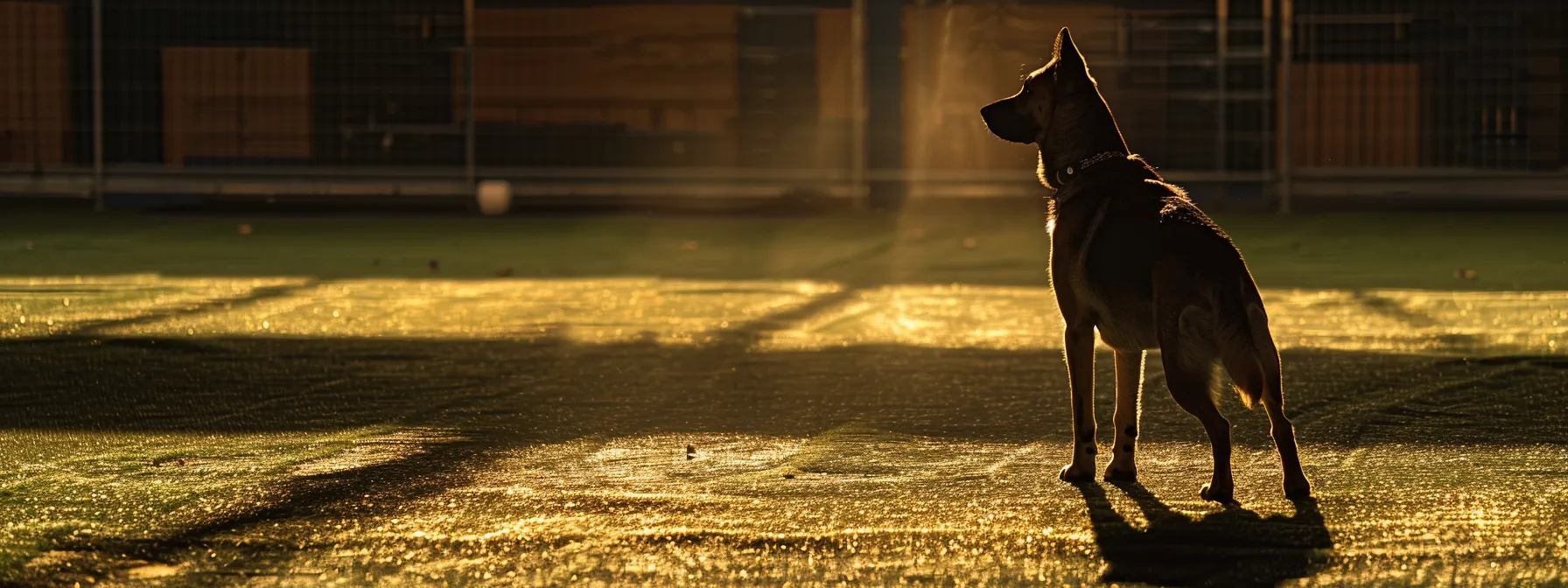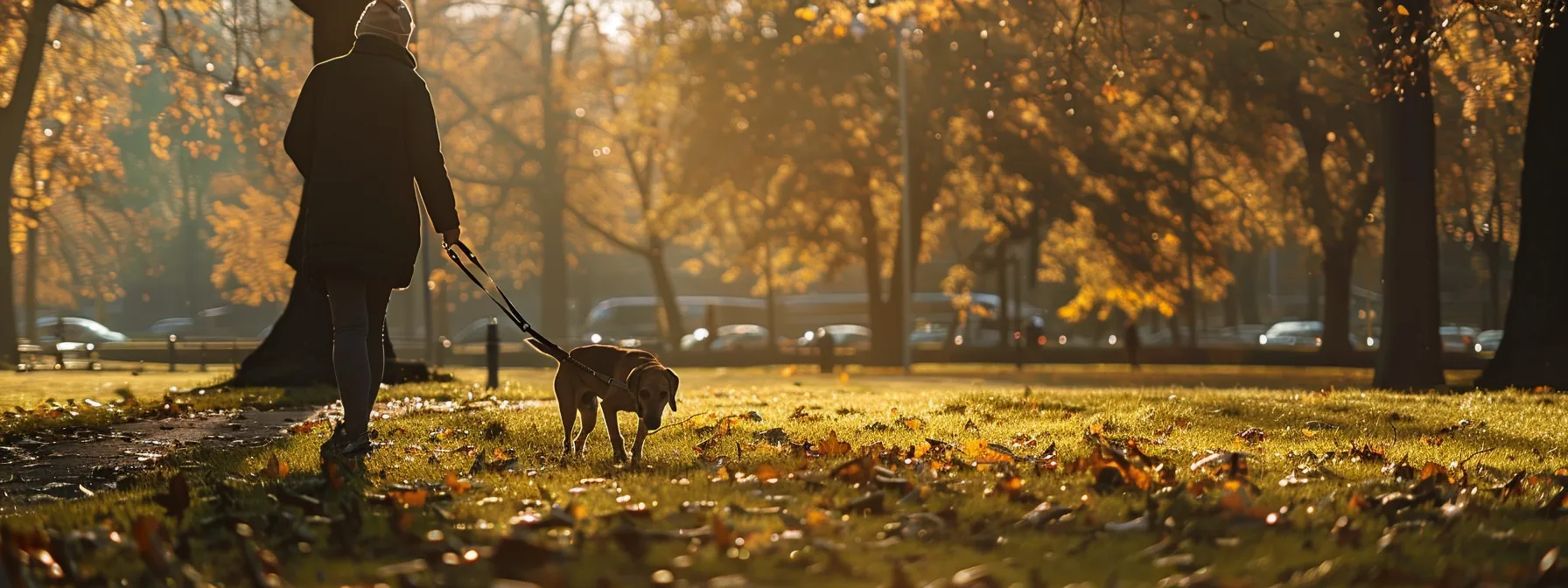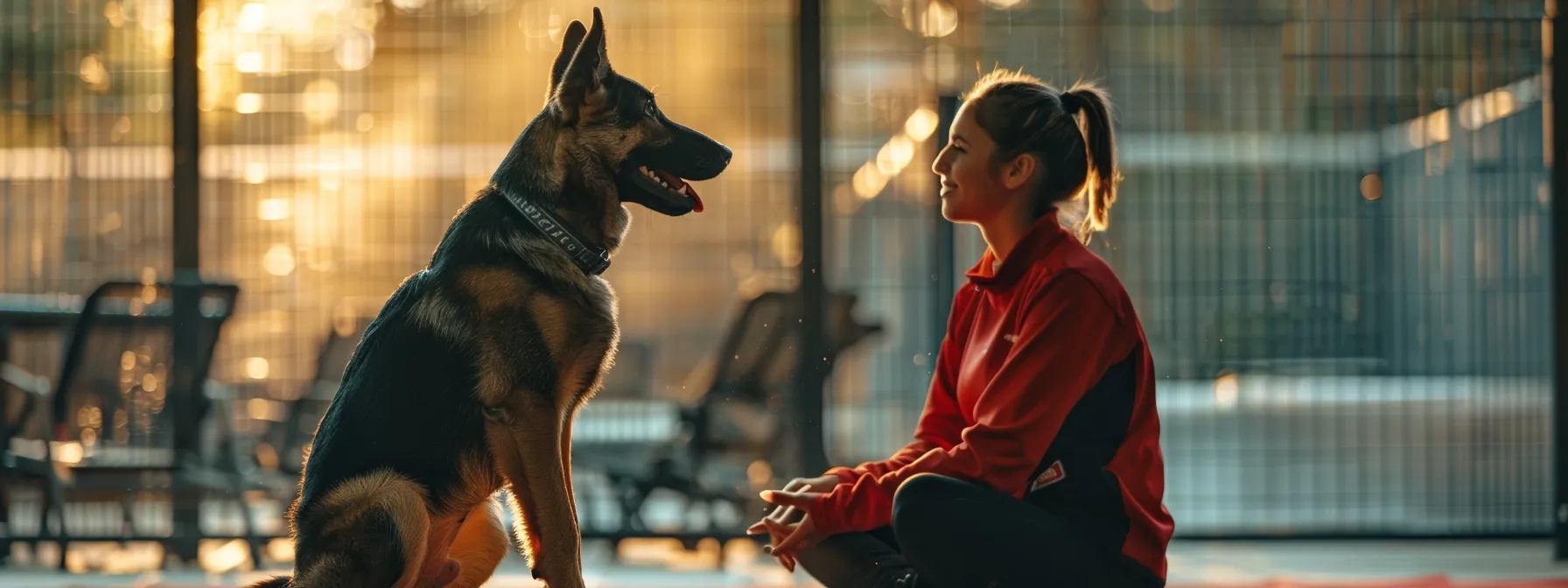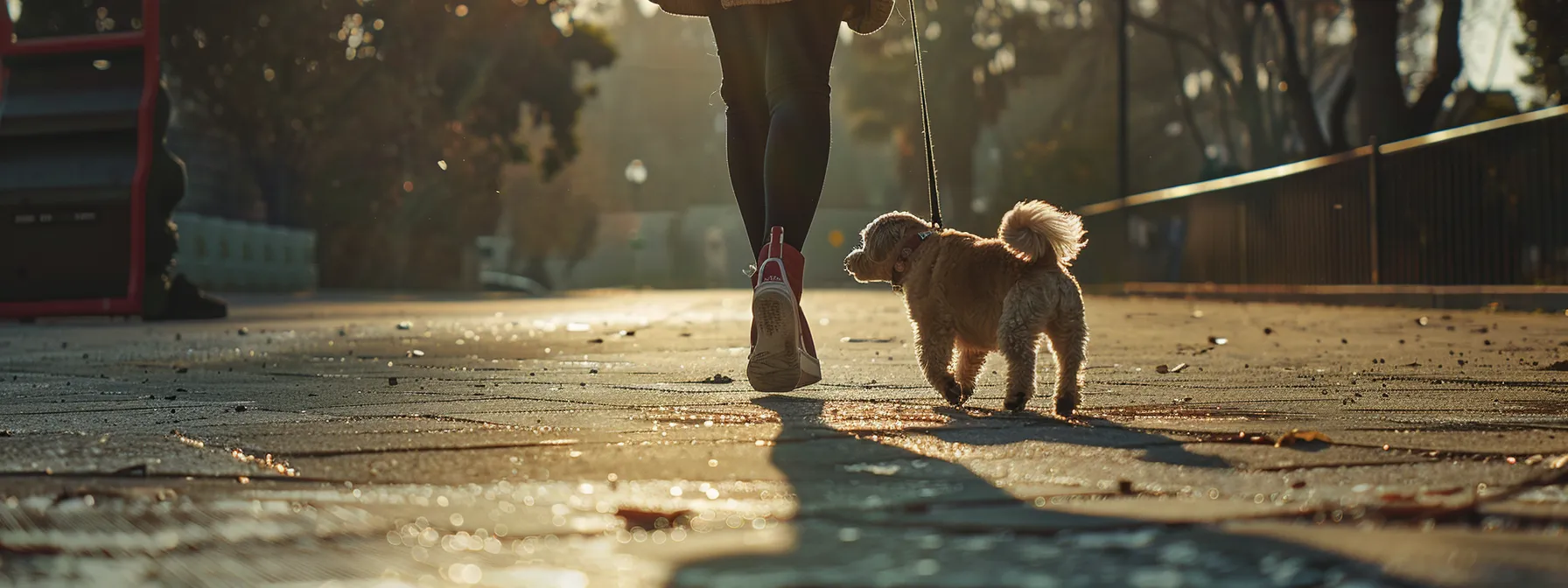Unlocking the Secrets of Effective Dog Training: Mastering the Heel Command

Mastering the heel command is a crucial step in your dog's training journey, regardless of breed or age. Whether you have a playful puppy or an adult dog with established behaviors, teaching your furry companion to walk calmly by your side can transform your daily walks. The American Kennel Club recognizes the heel command as a fundamental skill that enhances the bond between you and your dog while promoting good behavior. In this article, we'll unlock the secrets of effective dog training, focusing on the heel command. Keep reading to discover step-by-step techniques that will help you and your canine companion achieve perfect harmony during walks.
Key Takeaways
- Consistency and positive reinforcement are crucial for successful heel command training
- Gradual introduction of distractions helps dogs generalize the heel command across various situations
- Transitioning from leashed to off-leash heeling requires patience and controlled environments
- Clicker training can refine the heel command by marking precise moments of correct behavior
- Regular practice and creative challenges maintain and enhance a dog's mastery of the heel command
Understanding the Basics of Heel Command

The heel command is a cornerstone of effective dog training, rooted in principles of operant conditioning and positive reinforcement. Whether you're working with an energetic terrier or a focused herding dog, mastering this skill is crucial for safe and enjoyable walks. As a human, your consistent approach plays a vital role in shaping your dog's behavior. Before diving into the training process, it's essential to understand the command's definition, its importance, and the tools you'll need to set both you and your canine companion up for success.
Defining the Heel Command: What Does It Mean?
The heel command instructs your dog to walk calmly beside you, typically on your left side, with their shoulder aligned with your leg. This crucial skill ensures your dog remains under control during walks, preventing potential incidents like a dog bite or unwanted interactions with other animals or people.
When executed properly, heeling allows you to maintain a loose leash and reduces strain on both you and your dog's collar. This command is especially valuable for therapy dogs who need to navigate various environments calmly, and it forms the foundation for more advanced training exercises.
Importance of Mastering the Heel for Safe Walks
Mastering the heel command is crucial for your dog's safety and your peace of mind during walks. A well-heeled dog is less likely to pull you into dangerous situations or become distracted by potential hazards, promoting both your health and your dog's well-being. This skill also lays the groundwork for more advanced training, such as dog agility courses, where controlled movement is essential.
Beyond safety, a proficient heel enhances your dog's sociality and overall behavior. This skill is particularly valuable for therapy dogs who must navigate various environments calmly and for dogs working towards their Canine Good Citizen certification. By mastering the heel, you'll create a stronger bond with your dog and enjoy more pleasant, stress-free outings together.
The Role of Consistency in Training
Consistency forms the backbone of successful dog training, especially when teaching the heel command. You must maintain a steady approach, avoiding the temptation to use shock collars or other punishment-based methods that can hinder your dog's progress and damage your relationship. Instead, focus on positive reinforcement techniques that work well for all breeds, from high-energy spaniels to calmer assistance dogs.
Your consistent training efforts will pay off, whether you're preparing for a local dog show or simply aiming for more enjoyable daily walks. By establishing clear expectations and rewarding desired behaviors regularly, you'll help your dog understand and reliably perform the heel command. This consistency extends beyond training sessions, requiring you to maintain the same standards during everyday interactions to reinforce the behavior.
Setting Up for Success: Tools You'll Need
To effectively teach your pet the heel command, you'll need a few essential tools. A sturdy leash, preferably 4-6 feet long, and a comfortable collar or harness will enable you to guide your dog safely during training sessions. Choose high-value treats that motivate your dog without causing overexcitement, and consider using a clicker for precise timing in reward-based training.
For dogs with fear or aggression issues, you may need specialized equipment like a head halter or front-clip harness to maintain better control. A favorite toy can serve as an alternative reward for dogs less motivated by food. Remember, these tools are aids in training, not substitutes for patience and consistency.
Preparing Your Dog for Heel Command Training

Before diving into the heel command, you must lay a solid foundation for your dog's training. This preparation phase is crucial, whether you're working with a highly intelligent border collie or training a specialized detection dog. As an expert trainer, you'll focus on creating an ideal learning environment, using positive reinforcement techniques, and establishing clear communication with your canine partner. By starting with short, focused sessions and exercising patience, you'll set the stage for success in more advanced skills, including agility work. Remember, even the most talented collie requires proper preparation to reach its full potential in obedience and specialized tasks.
Introducing the Concept in a Distraction-Free Environment
Begin your dog's heel command training in a quiet, distraction-free area to establish clear communication and set your canine companion up for success. This controlled environment allows you to focus on your dog's behavior and instincts without external stressors, making it easier for breeds like pointers to concentrate on learning the new skill.
Gradually introduce mild distractions as your dog progresses, helping them generalize the heel command across various situations. This approach reduces stress and allows you to address any challenges in your dog's behavior calmly, reinforcing the concept that heeling is a positive experience regardless of the surroundings.
Using Treats and Rewards to Encourage Focus
Treats and rewards play a crucial role in encouraging your dog's focus during heel command training. Whether you're working with an energetic schnauzer or a focused German shepherd, using high-value treats can help maintain your dog's attention and motivation. Choose small, easily consumable treats that won't distract your dog from the task at hand, and vary the rewards to keep your pet engaged throughout the training session.
For dogs with anxiety or those training for specialized roles like search and rescue, incorporating their favorite toys as rewards can be particularly effective. This approach not only reinforces positive behavior but also helps create a strong association between the heel command and enjoyable experiences. Remember to adjust your reward system based on your dog's individual preferences and energy levels, ensuring that animal training remains a positive and engaging experience for both you and your canine companion.
Establishing Commands: Voice and Gesture Cues
Establish clear voice and gesture cues to effectively communicate the heel command to your dog. Use a consistent verbal cue like "heel" or "with me," paired with a hand signal such as patting your left hip or pointing downward. This combination of stimuli works well for various breeds, from the energetic cocker spaniel to the more laid-back setter.
Practice your cues in different environments to help your dog generalize the command. This approach is particularly beneficial for working dogs, such as police dogs or coonhounds, who need to respond reliably in various situations. Consistency in your cues will help your dog understand and execute the heel command more effectively, regardless of distractions or changes in their surroundings.
Building the Foundation: Short Sessions and Patience
Build your dog's confidence through short, focused training sessions. This approach works well for various breeds, from energetic scent hounds to stoic guard dogs. By keeping sessions brief, you'll maintain your dog's interest and prevent fatigue, allowing for more effective learning and retention of the heel command.
Patience is key when teaching the heel command, as rushing the process can lead to frustration for both you and your dog. Avoid using aversives, as science has shown positive reinforcement techniques to be more effective in the long run. Remember that each dog learns at their own pace, so adjust your expectations and training methods accordingly to ensure a positive experience for your canine companion.
Step-by-Step Guide to Teaching the Heel Command

Teaching your dog the heel command is a crucial skill that enhances control and safety during walks. Whether you're working with an energetic Old English Sheepdog or a focused Labrador Retriever, mastering this command requires a systematic approach. By breaking down the process into manageable steps, you'll effectively communicate your expectations and reinforce positive behaviors. This method works well for various breeds, from hunting dogs to family companions, adapting to each dog's unique language of learning. As you progress through these steps, you'll build a strong foundation for advanced training, whether you're preparing for retriever trials or simply aiming for more enjoyable daily walks.
Step 1: Getting Your Dog's Attention
To begin teaching the heel command, you must first capture your dog's attention. Use a high-value treat or your dog's favorite toy to draw their focus, ensuring they're ready to learn. This technique works well for various breeds, from the energetic bichon to the more laid-back pack dogs.
Once you have your dog's attention, maintain it by speaking in an upbeat tone and using enthusiastic body language. You can even incorporate elements from popular dog training podcasts to keep your sessions engaging. Remember, a focused dog is more likely to succeed in learning new commands, whether you're preparing for a flyball competition or simply aiming for better behavior during dog grooming sessions.
Step 2: Encouraging Your Dog to Stay by Your Side
With your dog's attention secured, encourage them to remain by your side using treats as a lure. Hold the treat close to your hip, allowing your dog to smell it without reaching it, and take a few steps forward. This technique works well for various breeds, from the giant mastiff to the compact Boston Terrier, adapting to each dog's natural gait and energy level.
As you move, praise your dog for staying in position and periodically reward them with the treat. This positive reinforcement helps create a strong association between the desired behavior and rewards, whether you're training a boxer for agility or a wolf hybrid for tracking. Remember to maintain a consistent pace and direction, allowing your dog to adjust to your movements and learn to anticipate your next step.
Step 3: Using the Leash to Guide, Not Pull
Use the leash as a gentle guide to reinforce your dog's position by your side, maintaining their attention without resorting to pulling. This technique helps establish your leadership role, which is particularly important for strong-willed breeds like the husky or the determined beagle. Keep the leash loose but ready to provide subtle corrections if your dog starts to stray from the heel position.
As you practice, gradually increase the duration of your walks, allowing your dog to become more comfortable with the heel command. This approach works well for high-energy breeds like the pinscher, helping them channel their enthusiasm into focused obedience. Remember to provide frequent praise and rewards to reinforce the desired behavior, strengthening your bond and encouraging your dog to stay attentive to your movements.
Step 4: Rewarding Proper Heel Positioning
Reward your dog promptly when they maintain the correct heel position, reinforcing the behavior with treats, praise, or their favorite toy. This positive reinforcement approach, inspired by the training methods of the Monks of New Skete, taps into your dog's psychology, creating a strong association between proper heeling and rewards. Even small toy dog breeds respond well to this technique, as it appeals to their natural desire for companionship and approval.
Gradually reduce the frequency of treats as your dog becomes more proficient, replacing them with verbal praise and occasional rewards to maintain the behavior. This method, popularized by trainers like Cesar Millan, helps prevent your dog from becoming overly dependent on food rewards while still encouraging them to stay in position. Remember to praise your dog's quiet demeanor during heeling, discouraging excessive barking and promoting a calm, focused state of mind.
Step 5: Practicing With Distractions
Gradually introduce distractions to challenge your dog's focus while practicing the heel command. Begin with mild distractions, such as a passing cyclist or a distant barking dog, and progressively increase the difficulty as your pet's skills improve. This approach works well for all breeds, from a hairless dog to a seasoned guide dog, helping them maintain composure in various environments.
Draw from your experience training animals in different settings, such as the bustling streets of Portugal, to create realistic scenarios for your dog to navigate. As you progress, incorporate more challenging distractions like other dogs, children playing, or enticing food smells, always rewarding your pet for maintaining the proper heel position. This comprehensive training will ensure your dog can reliably perform the heel command in any situation, enhancing both their obedience and your confidence as a handler.
Reinforcing the Heel Command Through Consistent Practice

Mastering the heel command requires more than just initial training; it demands consistent practice and reinforcement. As you work with your dog, whether it's a loyal cur or a high-energy breed, you'll need to gradually increase the difficulty by introducing distractions and integrating the command into daily walks. This process not only enhances your dog's obedience but also contributes positively to their mental health. Along the way, you may encounter setbacks, but with the right tips and a positive attitude, you can overcome these challenges. Professional trainers emphasize the importance of knowing when to reward and when to correct, ensuring your dog remains motivated and engaged throughout the learning process. By following these strategies, you'll solidify your dog's understanding of the heel command and strengthen your bond as a team.
Increasing Difficulty Gradually With Distractions
Gradually increase the difficulty of your dog's heel training by introducing controlled distractions. Start with mild distractions in a familiar environment, like your local dog obedience training near me facility, before progressing to more challenging scenarios. This approach helps your dog generalize the command across various settings, preparing them for real-world situations.
As you advance, consider enrolling in specialized classes or seeking guidance from a dog behaviorist near me to refine your training techniques. These experts can provide valuable insights on introducing complex distractions safely, ensuring your dog maintains focus even in stimulating environments like a busy shop or during puppy training near me sessions. Remember to adjust the level of difficulty based on your dog's progress, always setting them up for success.
Integrating the Heel Command Into Daily Walks
Integrate the heel command into your daily walks to reinforce your dog's training and make it a natural part of their routine. This consistent practice not only strengthens their obedience but also complements other essential skills like crate training a puppy and potty training puppy. As you walk, alternate between periods of heeling and free exploration, rewarding your dog for maintaining the correct position.
Utilize your daily outings as opportunities for ongoing dog obedience training, combining the heel command with other skills learned in board and train near me programs. This approach keeps your walks engaging and productive, allowing you to work on multiple aspects of your dog's behavior simultaneously. Consider incorporating elements from dog grooming courses during these walks, such as brief brushing sessions or paw inspections, to create a well-rounded training experience.
Troubleshooting Common Issues and Setbacks
Address common issues in heel command training, such as pulling or distraction, by revisiting the basics and adjusting your approach. If your dog struggles with off-leash k9 training, consider using tools like the barxbuddy to reinforce good behavior without resorting to harsh corrections. Remember that even traditionally challenging breeds like the foxhound can master the heel command with patience and consistent training.
Draw from your knowledge of police dog training techniques to overcome setbacks, focusing on clear communication and reward-based methods. If your dog regresses, remain calm and return to earlier training stages, gradually rebuilding their confidence and skill level. Consistently reinforce the heel command during daily activities to help your dog generalize the behavior across various environments.
Knowing When to Reward and When to Correct
Master the art of timing when rewarding or correcting your dog during heel command training. Reward your dog immediately when they maintain the correct position, especially if they're from high-energy breeds like herding dogs or hounds. This positive reinforcement strengthens the desired behavior and keeps your dog's cortisol levels low, promoting a stress-free learning environment.
Corrections should be gentle and used sparingly, focusing on redirecting your dog's attention rather than punishment. For breeds like the laika, known for their independence, consistent and clear communication is key. Consider consulting your local breed club for breed-specific training tips, as different dogs may respond better to varied reward and correction techniques.
Advanced Techniques for Perfecting the Heel

As you advance in your dog training journey, mastering advanced heel techniques becomes crucial for both you and your canine companion. Whether you're working with a high-energy breed or a laid-back pug, these advanced skills will elevate your training to new heights. Transitioning from leash to off-leash heeling demonstrates a deep level of trust and control, while clicker training offers precision in refining the heel command. For those seeking to take their dog's skills even further, incorporating the heel into agility training and dog sports opens up exciting new possibilities. These advanced techniques not only showcase your dog's abilities but also strengthen the bond of ownership between you and your four-legged friend.
Transitioning From Leash to Off-Leash Heeling
Transition from leash to off-leash heeling by gradually increasing your dog's freedom in controlled environments. Begin in a fenced area, using a long line to maintain some control while allowing your dog more independence. As your dog's reliability improves, slowly shorten the line until you can remove it entirely, always rewarding good behavior and maintaining a consistent training approach.
Practice off-leash heeling in various locations to solidify your dog's understanding of the command, regardless of distractions. Incorporate sudden changes in direction and speed to keep your dog engaged and attentive to your movements. Remember to maintain a high rate of reinforcement during this transition period, ensuring your dog understands that staying close to you is rewarding, even without the physical connection of a leash.
Using Clicker Training to Fine-Tune the Heel Command
Harness the precision of clicker training to refine your dog's heel command, creating a clear and consistent communication system. Introduce the clicker by pairing it with treats, then use it to mark the exact moment your dog achieves the correct heel position. This method allows you to pinpoint and reinforce subtle improvements in your dog's performance, leading to a more polished and reliable heel.
Gradually raise your standards as your dog becomes more proficient, using the clicker to reward increasingly precise positioning and longer durations of heeling. Incorporate the clicker into your training sessions to address specific aspects of the heel, such as maintaining eye contact or adjusting pace. This targeted approach enables you to shape your dog's behavior more effectively, resulting in a more responsive and attentive heeling performance.
Incorporating Heel Into Agility Training and Dog Sports
Integrate the heel command into your agility training regimen to enhance your dog's overall performance and control. Use the heel command to navigate between obstacles, maintaining focus and precision as you guide your dog through the course. This incorporation not only improves your dog's responsiveness but also adds an extra layer of discipline to their agility work.
Apply the heel command in various dog sports, such as rally obedience or competitive obedience, to showcase your dog's versatility and training. Practice transitioning smoothly between heeling and other required behaviors, reinforcing your dog's ability to switch tasks quickly and maintain focus throughout competitions. This advanced application of the heel command will set you apart in dog sports, demonstrating the strong bond and communication between you and your canine partner.
Maintaining Mastery of the Heel Command Over Time

Mastering the heel command is just the beginning of your dog training journey. To maintain and enhance this crucial skill, you'll need to implement a consistent strategy of reinforcement and challenge. Regular refresher sessions keep the command sharp in your dog's mind, while creative challenges and games add excitement to the learning process. As you and your canine companion progress, it's essential to celebrate milestones and set new goals, pushing the boundaries of what you can achieve together. This ongoing commitment not only solidifies the heel command but also strengthens the bond between you and your dog, setting the stage for advanced training and a lifetime of harmonious companionship.
Regular Refreshers: Keeping the Command Sharp
Reinforce your dog's heel command regularly through short, focused practice sessions. Incorporate these refreshers into your daily routine, using everyday situations like walks or trips to the park as training opportunities. This consistent approach keeps the command fresh in your dog's mind and helps maintain their performance over time.
Vary your training environments and distractions to challenge your dog's mastery of the heel command. Gradually increase the difficulty of these refresher sessions, introducing new stimuli or more complex scenarios to ensure your dog can execute the command reliably in any situation. Remember to always end these sessions on a positive note, rewarding your dog's efforts and maintaining their enthusiasm for training.
Challenges and Games to Enhance Heel Skills
Enhance your dog's heel skills through engaging challenges and games that make training fun and rewarding. Set up obstacle courses in your backyard or local park, guiding your dog through them while maintaining a perfect heel position. Use everyday objects like traffic cones or cardboard boxes to create weaving patterns or sudden direction changes, keeping your dog focused and attentive to your movements.
Introduce speed variations to your heel training, alternating between slow walks, normal pace, and light jogs. Play "Red Light, Green Light" with your dog, practicing sudden stops and starts while reinforcing the heel position. These dynamic exercises not only improve your dog's heel command but also boost their overall obedience and responsiveness to your cues.
Celebrating Progress and Setting New Goals
Celebrate your dog's progress in mastering the heel command by acknowledging their achievements and rewarding their efforts. Recognize small improvements and major milestones alike, reinforcing the positive aspects of your training journey. Share your success with fellow dog owners or on social media platforms to inspire others and gain valuable feedback.
Set new goals to continually challenge your dog and expand their skills beyond basic heeling. Consider incorporating advanced techniques like off-leash heeling in busy environments or combining the heel command with other obedience tasks. Adjust your goals based on your dog's individual progress and temperament, always striving for improvement while maintaining a positive training experience.
Conclusion
Mastering the heel command unlocks a new level of control and harmony in your relationship with your dog. This essential skill enhances safety during walks, strengthens the bond between you and your canine companion, and serves as a foundation for more advanced training. By consistently practicing and refining the heel command, you equip your dog with the focus and discipline needed to navigate various environments and situations confidently. Ultimately, the journey of mastering the heel command not only improves your dog's behavior but also enriches your shared experiences, leading to a more fulfilling and enjoyable partnership.
